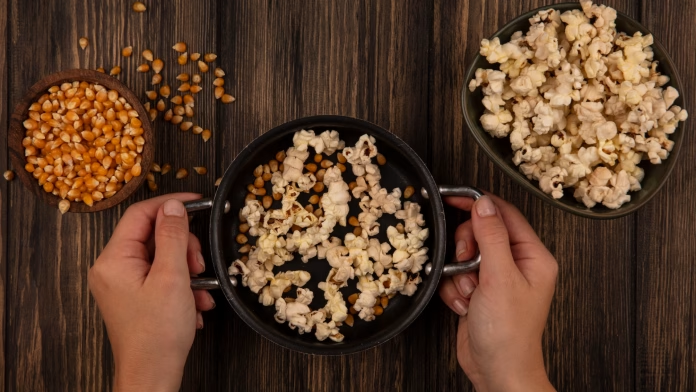Popcorn is an iconic snack that has become almost synonymous with cinema. The delicious aroma and crunch of freshly popped popcorn are inseparable from the movie-going experience. But how did popcorn become the go-to snack for movie theaters around the world? We have devised a nuanced study to understand the history of popcorn and how it became the global snack of choice in the cinematic world.
Popcorn is a type of corn kernel that, when heated, expands and pops. The origins of popcorn can be traced back to Mexico over 5000 years ago, where it was an important food source for the Aztecs. The early colonizers of America also enjoyed popcorn, and it was a popular snack at fairs and carnivals in the 19th century.
However, it wasn’t until the early 20th century that popcorn became a staple snack at movie theaters. In fact, the story goes that popcorn was actually banned from cinemas in the early days of movie-going, as it was considered too messy and noisy. Instead, theater owners sold candy and soda as the snack of choice.
So how did popcorn become the dominant snack in cinemas? The answer lies in a combination of cultural movements and clever marketing. One of the key factors was the introduction of sound to movies in the late 1920s. Suddenly, movies were no longer silent and theaters had to find a way to cover up the noise of the projector. Popcorn was the perfect solution, as its crunchiness helped to mask the sound of the projector.
At the same time, the Great Depression hit America, and people were looking for cheap forms of entertainment. Movie theaters saw an opportunity to increase their revenue by selling popcorn, which was cheap to make and could be sold at a high markup. This led to an increase in the number of popcorn machines in cinemas, and soon the smell of freshly popped popcorn became synonymous with movie-going.
Another important factor in the rise of cinema popcorn was clever marketing. In the 1930s, a man named Glen W. Dickson invented the popcorn machine that could be easily transported and used in different locations. He also developed a pre-packaged popcorn product called “Red Top,” which could be sold to theaters.
Theaters quickly realized the potential of pre-packaged popcorn, as it was much easier and cleaner to serve than freshly popped popcorn. They also began to promote popcorn heavily through advertising campaigns and even started to give away free samples to entice people to buy.
Popcorn’s popularity continued to grow throughout the 20th century, and it became a global phenomenon. Today, popcorn is the go-to snack for movie-goers around the world, and it’s estimated that Americans alone consume 16 billion quarts of popcorn each year.
Popcorn’s significance extends beyond just being a tasty snack. In many ways, it’s become an integral part of the movie-going experience. The smell of popcorn and the sound of it being eaten have become part of the ambiance of movie theaters.
Furthermore, the popularity of popcorn has had a significant impact on the agricultural industry. Popcorn is one of the few crops that is still largely grown by small-scale farmers, and its demand has provided a stable source of income for many of them.
In recent years, the rise of streaming services and home theaters has led some to question the future of movie theaters. However, popcorn’s enduring popularity suggests that the cinema experience will continue to be an important part of our cultural landscape.
Popcorn’s rise to global fame as the go-to snack for cinema is a fascinating story that involves cultural movements, clever marketing, and the enduring appeal of a tasty snack. Today, popcorn remains an integral part of the movie industry and one it’s key profit-yielding products.





